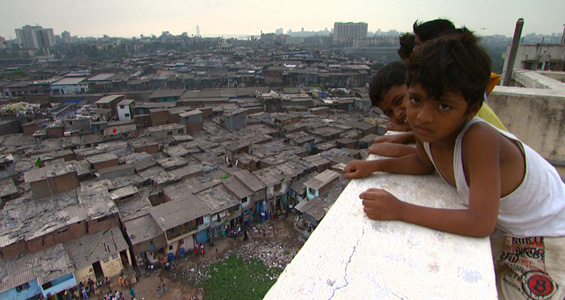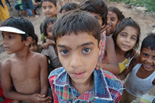Hope and despair in ‘Maximum City’
Mumbai could become a great city, but may leave behind many of its people.

 |
| As many as one million people are thought to live in Mumbai’s Dharavi slum |
Mumbai is a city that worships style and glamour, and the beautiful people turned out in force for Lakme Fashion Week.
Bollywood stars and socialites get the front-row seats, as much a part of the event as India’s best-known models, who strut down the catwalk in the latest fashions.
In the corridors outside, the photographers hunt in packs, identifying and then swarming round the passing celebrities. The air sparkles with the flash of cameras, and the glint of diamonds. The hair-styles are elaborate, the designer dresses immaculate.
I had only been in Mumbai a few hours and I was already seduced by this sensual city.
Energy and enterprise
The catch, of course, is that this is also a place of bewildering contrasts. Just a mile or so away from the Lakme Fashion Week, is the Dharavi slum.
Scenes from Slumdog Millionaire were filmed in this vast warren of shacks, a place of squalor and poverty.
| Special report |
 |
Nobody knows how many people live in Dharavi; I have read that up to one million may be crammed into its one square mile.
Amidst the alleyways, I saw naked toddlers stumble over wasteland covered in festering piles of garbage and human excrement, and I gagged at the dreadful smells.
But I also found Dharavi to be a place full of energy and enterprise. In the dusty openings between buildings, children play cricket with fanatic enthusiasm. I saw leather tanneries, and plastic recycling businesses, and potters working at their kilns, and even a tiny cinema.
Twenty-one-year-old Sagar Shinde was born and raised in Dharavi, and is full of dreams and aspirations. He is a young man with many talents; interested in law, but also animation, and performing magic tricks, which he tries out on whichever children he can lure away from the games of street cricket.
Sagar loves the sense of community and friendship in Dharavi, and says: “If you work hard in Mumbai anything is possible, there is no such thing as impossible here.
“But you must have talent, and put in effort, and have access to finance; with these three you can achieve anything.”
Displays of wealth
On a sweltering Sunday morning, we head downtown to south Mumbai, the historic heart of the city, which was hit so hard in last November’s terror attacks, (an event referred to by all here as 26/11, the date on which the attacks started).
We have come to a special parade of Mumbai’s most expensive cars – Ferraris, Lamborghinis and Rolls Royces. It is a chance for the super-rich to show off their toys, and a chance for the rest of us to admire them.
| IN VIDEO |
|
|
| India’s city of dreams and despair |
More Videos… |
Hundreds of people line the corniche and cheer as the cars rev their V8 engines, and zip through the city traffic.
The event has been organised by Gautam Singhania, an industrialist and businessman famous for his love of fast cars, planes and boats (and, in his younger days, his fabulous parties).
Gautam, of course, is well aware of his city’s staggering poverty, but berates the foreign media for not looking beyond it.
“There is another side to this city, and I think poverty co-exists in any developing economy in the world,” he tells me.
“I love this city, it’s a great city … I think if you look at the global scenario, I think India is far better off than anybody else.”
Left behind
In some ways, Gautam is right. Mumbai and India are not immune to the global economic crisis, and I have sensed concern from many of the people whom I have met here that jobs are starting to disappear, and that tougher economic times lie ahead.
But for those at the top, there is still a sense that this is a good place to be, that India is a rising power, and Mumbai, as the country’s economic engine, will continue to prosper.
Mumbai is fast on its way to becoming a great city, but it is leaving far too many of its people behind.
The city trains – dirty and smelly – are packed beyond belief. At major stations people fight – kicking and shoving – to get on and off.
The air is polluted; it is often difficult to make out the silhouette of nearby skyscrapers through the haze. The traffic is terrible. The noise – the car horns, the sound of construction – never stops.
Glorious older buildings are in various states of decay.
Suketu Mehta, in his wonderful book Maximum City, Bombay Lost and Found, says that “this is the future of urban civilisation on the planet … God help us”.
Watching all these people struggling to survive in the same mega-city is a glimpse into what 21st century life will be for so many, and it is not always pretty.
